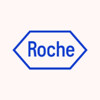
Thalidomide in Treating Anemia in Patients With Myelodysplastic Syndrome
LeukemiaMyelodysplastic Syndromes1 moreRATIONALE: Thalidomide may be an effective treatment for anemia caused by myelodysplastic syndrome. PURPOSE: Randomized phase II trial to study the effectiveness of thalidomide in treating anemia in patients who have myelodysplastic syndrome.

Anemia in Patients With a Non-Myeloid Malignancy
NeoplasmsAnemiaChemotherapy can often cause anemia in patients with cancer. Anemia is a low number of red blood cells. The symptoms of anemia may include fatigue, dizziness, headache, chest pain, and shortness of breath. Erythropoietin is a hormone made by the kidneys that signals the bone marrow to produce more red blood cells. Recombinant human erythropoietin has been produced in the laboratory and has the same effect as the hormone produced by the body. Use of recombinant human erythropoietin allows the body to produce more red blood cells, possibly eliminating or decreasing your symptoms and the need for a red blood cell transfusion. Recombinant human erythropoietin is FDA approved to treat anemia in cancer patients receiving chemotherapy. This clinical study is investigating the effectiveness of darbepoetin alfa for the treatment of anemia in patients with non-myeloid malignancies who are receiving multicycle chemotherapy. Darbepoetin alfa is a recombinant erythropoietic protein that stimulates the production of red blood cells. This medication has not been approved to treat cancer patients with anemia, however it has been approved by the FDA to treat chronic renal failure patients with anemia.

Combination Therapy of Severe Aplastic Anemia
Severe Aplastic AnemiaThis study will test the safety and effectiveness of a combination of three drugs in treating severe aplastic anemia and preventing its recurrence. Two drugs used in this trial ATG and cyclosporine are standard combination therapy for aplastic anemia. This study will try to improve this therapy in three ways: 1) by altering the drug regimen to allow the drugs to work better; 2) by reducing the risk of kidney damage; and 3) by adding a third drug mycophenolate mofetil to try to prevent disease relapse. Patients with severe aplastic anemia who do not have a suitable bone marrow donor or who decline bone marrow transplantation may participate in this study. Patients will have a skin test for ATG allergy, chest X-ray, blood test, and bone marrow aspiration before treatment begins. ATG will then be started, infused through a vein continuously for 4 days. Ten days after ATG is stopped, cyclosporine treatment will begin, taken twice a day by mouth in either liquid or capsule form and will continue for 6 months. Also, in the first 2 weeks of treatment, patients will be given a full dose of corticosteroid (prednisone) to prevent serum sickness that could develop as a side effect of ATG therapy. The dosage will be decreased after that. Mycophenolate will be started at the same time as ATG, in two daily doses by mouth, and will continue for 18 months. Patients will be hospitalized at the beginning of the study. During this time, blood will be drawn at 3-week intervals and a bone marrow examination will be repeated 3 months after treatment has begun. Additional tests, including X-rays may be required. After hospital discharge, patients will be followed on an outpatient basis at 3-month intervals. The patients own physician will perform blood tests weekly and kidney and liver function tests every 2 weeks during cyclosporine therapy. Transfusions may be required initially.

Stem Cell Factor Medication for Aplastic Anemia
Aplastic AnemiaPancytopeniaThis trial, sponsored by Amgen, Inc., which produces the recombinant methionyl human stem cell factor (r-metHuSCF), also involves two other institutions. The primary objective is determination of the safety of administering multiple doses of r-metHuSCF in the setting of acquired aplastic anemia and evaluation of the effect of r-metHuSCF on peripheral blood counts. Potential effects of r-metHuSCF on frequency of need for red cell or platelet transfusions and on bone marrow morphology/cellularity will also be evaluated.

Hydroxyurea for the Treatment of Patients With Sickle Cell Anemia
Sickle Cell AnemiaA total of fifty severely affected patients with homozygous sickle cell disease or other sickling disorders (e.g. B negative or B positive Thalassemia/Sickle) who are greater than 18 years of age will be eligible for treatment. Such patients must be able to tolerate an extensive period without blood transfusion and have relatively well preserved renal and hepatic function (creatinine less than 1.5 mg/dl and normal liver function test with exception of a mild elevation in transaminase). Evidence of severe sickle cell anemia will include recurrent pain crisis, chronic bone oain, evidence of aseptic necrosis with symptoms, and intractable leg ulcer, etc. On admission to the study, each patient will receive a complete history and physical examination. These data and standard laboratory evaluation, including a test for pregnancy if appropriate, will be adequate to ascertain whether any of the criteria for exclusion are present. Each patient must accept responsibility for for using an effective means of contraception. Patients who are found to be HIV positive will be excluded from the study....

Erythropoietin for Anemia Due to Zidovudine in Human Immunodeficiency Virus Infection
Acquired Immunodeficiency SyndromeAnemia3 moreTo determine whether administration of human recombinant erythropoietin (REPO) improved or eliminated the anemia seen in human immunodeficiency virus (HIV) infected patients after therapy with zidovudine (ZDV).

Eltrombopag for Treatment of Fanconi Anemia
Fanconi AnemiaAn open-label, phase II study to assess the efficacy and safety of eltrombopag for the treatment of children and adolescents with Fanconi anemia.

Improving the Iron Status of Athletes With Pre-, Pro- and Synbiotics
Iron-deficiencyIron Deficiency Anemia1 moreIron deficiency (ID) is the most common micronutrient deficiency worldwide, and poor iron bioavailability is a major cause. While 30% of female athletes are affected by ID, and its consequences are highly relevant to athletic performance, ID affects women and children around the world with consequences just as relevant, if not more so (e.g. school performance, work capacity and thus wage earning). With poor iron absorption being a cause of ID in active women, it is especially important to discover simple ways to improve iron (Fe) uptake. While some studies have suggested that consumption of prebiotic fiber may improve Fe absorption in animal models, there have been few studies examining the effects of synbiotic supplementation (consumption of both a prebiotic and probiotic that work together) on Fe uptake in adult females (athletes and non-athletes). A recent pilot study demonstrated a substantial improvement in Fe uptake in female athletes after 4 and 8 weeks of synbiotic supplementation compared to placebo during Fe repletion with a low dose of ferrous sulfate (FeSO4). If synbiotic supplementation can improve the Fe bioavailability of FeSO4 (which is ~30%) in ID women during repletion of Fe status, it could possibly improve the Fe bioavailability of non-heme Fe sources, as well as mixed meals. Research Question: What is the effect of synbiotic supplementation (a supplement containing a prebiotic + a probiotic), compared to prebiotic supplementation or a placebo, on Fe uptake and the gut microbiome in ID athletes during low-dose Fe repletion? Hypothesis: In the proposed study, we hypothesize that synbiotic supplementation along with Fe repletion with a low dose of FeSO4 will have greatest impact on athletes' Fe uptake due to alterations in the microbiome, which will be assessed.

A Comparison Between Intravenous Iron Sucrose to Its Combination With Oral Iron Supplements for...
Postpartum AnemiaThis study is aimed to compare the efficacy of two mode of iron administration to treat post partum anemia - a single dose of intravenous iron sucrose versus a single dose of iron sucrose and 6 weeks of treatment with oral iron supplement.

Ascertain the Optimal Starting Dose of Mircera Given Subcutaneously for Maintenance Treatment of...
AnemiaRenal Insufficiency1 moreAscertain the starting dose of Mircera given subcutaneously for the maintenance treatment of anemia in pediatric participants with chronic kidney disease (CKD) on dialysis or not yet on dialysis when switching from stable subcutaneous (SC) maintenance treatment with epoetin alfa, epoetin beta, or darbepoetin alfa.
